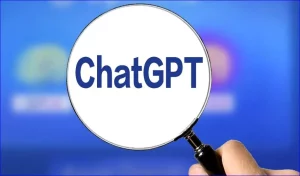Is Using AI like ChatGPT Cheating: 7 ways to Detect AI cheats

The answer to whether using ChatGPT is considered cheating or not would depend on the specific context in which it is being used.
If you are a student who is using ChatGPT to generate responses for assignments or exams that are intended to be completed on your own, then using ChatGPT could be considered a form of academic dishonesty and could be subject to disciplinary action.
In such contexts, it is generally expected that students will complete assignments and exams on their own, using only the resources that have been explicitly authorized by the instructor.
On the other hand, if you are using ChatGPT for non-academic purposes, such as to assist with writing or to generate responses to social media posts, then using ChatGPT would not be considered cheating. In such cases, ChatGPT could be viewed as a tool that can be used to assist with various tasks, much like a calculator or a grammar checker.
Ultimately, it is up to individuals and organizations to establish their own standards and policies regarding the use of AI language models like ChatGPT.
However, it is important to remember that using ChatGPT to complete academic work that is intended to be completed on one’s own could be considered a form of academic dishonesty and could have negative consequences.
How professors can Detect ChatGPT answers
It can be difficult for professors to detect whether a student has used ChatGPT to generate answers to assignments or exams, as the output from ChatGPT can be very similar to that of human-generated text.

However, there are several strategies that professors may use to identify cases of academic dishonesty involving the use of ChatGPT or other language models:
1. Plagiarism Detection Software
Professors may use plagiarism detection software to compare the text of an assignment or exam answer to other sources of text, including online resources, other student work, and previous submissions.
If the text generated by ChatGPT is very similar to that of another source, then it may be flagged as potentially plagiarized.
2. Familiarity with Student Writing Style
Professors who are familiar with the writing style of their students may be able to identify cases where the writing style of an assignment or exam answer is significantly different from what they would expect from a particular student.
If the writing style of an answer is noticeably different, then it may raise suspicions and prompt further investigation. Remember, using ChatGPT is plagiarism if you copy and paste the text as your own.
3. Follow-up Questions
In some cases, professors may ask follow-up questions related to an assignment or exam answer, to probe the student’s understanding of the material in more depth.
If the student is unable to answer these questions satisfactorily, then it may suggest that they did not generate the answer on their own.
4. Proctored Exams
In cases where exams are taken online, professors may use proctoring software that monitors the student’s activity during the exam.
This can include recording the student’s screen, webcam, and microphone to detect any behavior that suggests academic dishonesty, such as using ChatGPT or other unauthorized resources.
In summary, professors may use a combination of strategies to detect cases of academic dishonesty involving the use of ChatGPT or other language models.
However, it is important to note that these methods may not be foolproof, and that the best way to prevent academic dishonesty is to establish clear policies and expectations, and to communicate these to students clearly.
7 Ways to Prevent Students from Using ChatGPTt Answers
There are many ways students can use AI to aid their studies and improve. But many use it to cheat, which needs to be stopped.
There are several strategies that instructors can use to discourage students from using ChatGPT or other language models to generate answers for assignments or exams:
1. Educate students about Academic Integrity
It’s important for instructors to communicate to their students the importance of academic integrity and the consequences of academic dishonesty.
This can be done through class discussions, handouts, and other materials that emphasize the value of learning and honest effort.
2. Design Assignments and Exams that test Critical thinking and Problem-Solving
If assignments and exams are designed to require critical thinking and problem-solving, rather than simply memorization of facts, then it becomes more difficult for students to rely on ChatGPT or other language models to generate answers.
3. Use Open-ended questions and Essay prompts
Open-ended questions and essay prompts that require students to express their own ideas in their own words can help to discourage the use of ChatGPT or other language models.
These types of questions require students to think creatively and synthesize their own ideas, rather than simply regurgitating information from a model.
4. Create a culture of Collaboration and Support
Instructors can create a culture of collaboration and support in the classroom, where students feel comfortable asking for help and working together to solve problems. This can help to reduce the pressure that students may feel to cheat in order to keep up with their peers.
5. Use Plagiarism Detection Software
Instructors can use plagiarism detection software to check for instances of academic dishonesty involving the use of ChatGPT or other language models.
Knowing that their work will be checked can discourage students from taking the risk of using these resources.

6. Proctor Exams
Instructors can use proctoring software to monitor students during online exams, which can help to deter academic dishonesty involving the use of ChatGPT or other resources.
7. Setting practical Exams and Class Attendance
Teachers can set exams that are practical and do not need much writing. This combined with testing students using physical class attendance can curb all forms of cheating.
By implementing these strategies, instructors can help to discourage students from using ChatGPT or other language models to generate answers for assignments or exams and create an environment where academic integrity is valued and supported.
Can Proctor Software Detect ChatGPT
Proctoring software is designed to monitor a student’s activity during an online exam and detect any behavior that suggests academic dishonesty, such as using unauthorized resources.
While proctoring software can’t specifically detect ChatGPT or other language models, it can detect certain types of behavior that may suggest that a student is using these resources.
For example, proctoring software may monitor a student’s screen to see if they are using any applications or websites that are not allowed during the exam. If a student opens a web browser or another application that could be used to access ChatGPT or other language models, the proctoring software may flag this behavior as potentially suspicious.
Similarly, proctoring software may use artificial intelligence (AI) to monitor a student’s movements and actions during the exam.
This AI can detect patterns of behavior that suggest academic dishonesty, such as the student frequently looking away from the screen or the presence of another person in the room.
It’s worth noting that proctoring software is not foolproof, and there is no guarantee that it will be able to detect every instance of academic dishonesty involving the use of ChatGPT or other language models.
However, using proctoring software can help to deter students from using these resources, and can provide instructors with evidence of potential academic dishonesty that can be used in investigations.
How Students use AI and ChatGPT to cheat in School
Students can use AI chatbots, like ChatGPT, to cheat in various ways, such as:
1. Generating answers for Assignments or Exams
Students can input a question or prompt into an AI chatbot like ChatGPT, and receive a response that they can use to complete an assignment or exam.
This approach allows students to bypass the need to research and understand the material themselves and can give them an unfair advantage over their peers who are completing the assignment or exam honestly.
2. Solving Mathematics
ChatGPT is an advanced AI that does a lot of complex stuff. Indeed, ChatGPT can solve mathematics tasks and most students love this feature.
So, in taking advantage, most students use it to do their maths homework and assignments.
2. Taking Online Exams
Students can use AI chatbots to take online exams for them by inputting the exam questions into the chatbot and receiving answers in return.
This allows students to cheat on exams without being physically present in the exam room, and without the knowledge of their instructor.
3. Writing Essays

Students can use AI chatbots to generate essays or written assignments by inputting a prompt or topic into the chatbot and receiving a response that they can use as the basis for their assignment.
This approach allows students to bypass the need to develop their own ideas and write in their own words, and can give them an unfair advantage over their peers.
Check out how students use AI to write papers and essays and learn a few steps and tips.
Conclusion
To prevent cheating using AI chatbots, instructors can take various measures such as designing assignments and exams that test critical thinking and problem-solving skills, using open-ended questions and essay prompts, and providing plagiarism detection software to check for academic dishonesty.
They can also encourage a culture of academic integrity by educating students about the value of learning and honest effort, and by creating a supportive and collaborative learning environment.

